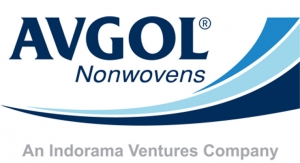Karen McIntyre, Editor11.10.17
As a mother of three girls (some of which are rapidly approaching puberty), and as the editor of Nonwovens Industry, the changing landscape of the feminine hygiene market is something I monitor very closely. In recent years, we have seen a more open approach to feminine hygiene marketing (gone are the days of white pants, sunshine taking over storm clouds and other euphemisms trying to represent a topic marketers were just not comfortable with). Today’s campaigns depict strong and active girls speaking freely about their periods, promoting products that are made exclusively for young and active women.
This “not your mother’s tampon” approach to marketing is probably best exemplified with Procter & Gamble’s #LikeAGirl campaign which shows girls excelling on the field, in the pool and on the courts presumably while experiencing menstruation. And, while girls will probably always use cramps as an excuse to get out of gym class, maybe these campaigns will help guide girls as they menstruate for the first time.
Marketing campaigns are not the only thing changing in feminine hygiene. The product choices continue to expand. From period pants to menstrual cups to new updates on existing products like tampons and pads, the market has become a hot bed of innovation for entrepreneurs offering customized feminine hygiene products.
For example, Corman has relaunched its product line in America, targeting the two-thirds of women with sensitive skin with a 100% organic cotton-based line. It seems Corman is on point with this launch; studies show that the organic-based feminine hygiene market will grow at 7% per year between now and 2021, well ahead of the industry average.
While the subject of menstruation will never be an entirely pleasant one, it does seem that feminine hygiene manufacturers are working hard to address the needs of both young girls and women, hoping to attract them to their brands as girls and keep them with them as they become women. It makes sense that these efforts are starting on the marketing side of things.
I think this is just the beginning.
Karen McIntyre
Editor
kmcintyre@rodmanmedia.com
This “not your mother’s tampon” approach to marketing is probably best exemplified with Procter & Gamble’s #LikeAGirl campaign which shows girls excelling on the field, in the pool and on the courts presumably while experiencing menstruation. And, while girls will probably always use cramps as an excuse to get out of gym class, maybe these campaigns will help guide girls as they menstruate for the first time.
Marketing campaigns are not the only thing changing in feminine hygiene. The product choices continue to expand. From period pants to menstrual cups to new updates on existing products like tampons and pads, the market has become a hot bed of innovation for entrepreneurs offering customized feminine hygiene products.
For example, Corman has relaunched its product line in America, targeting the two-thirds of women with sensitive skin with a 100% organic cotton-based line. It seems Corman is on point with this launch; studies show that the organic-based feminine hygiene market will grow at 7% per year between now and 2021, well ahead of the industry average.
While the subject of menstruation will never be an entirely pleasant one, it does seem that feminine hygiene manufacturers are working hard to address the needs of both young girls and women, hoping to attract them to their brands as girls and keep them with them as they become women. It makes sense that these efforts are starting on the marketing side of things.
I think this is just the beginning.
Karen McIntyre
Editor
kmcintyre@rodmanmedia.com








